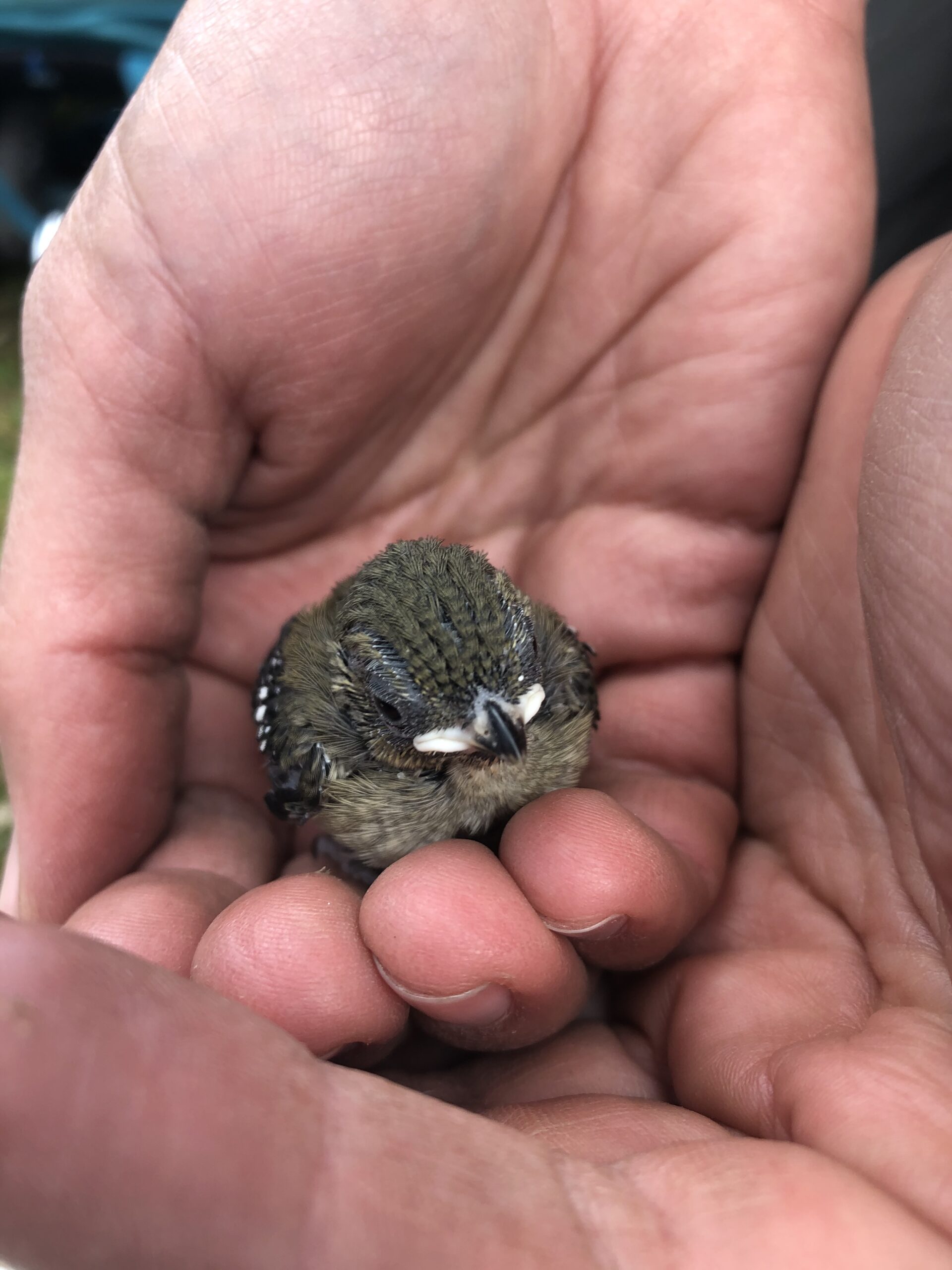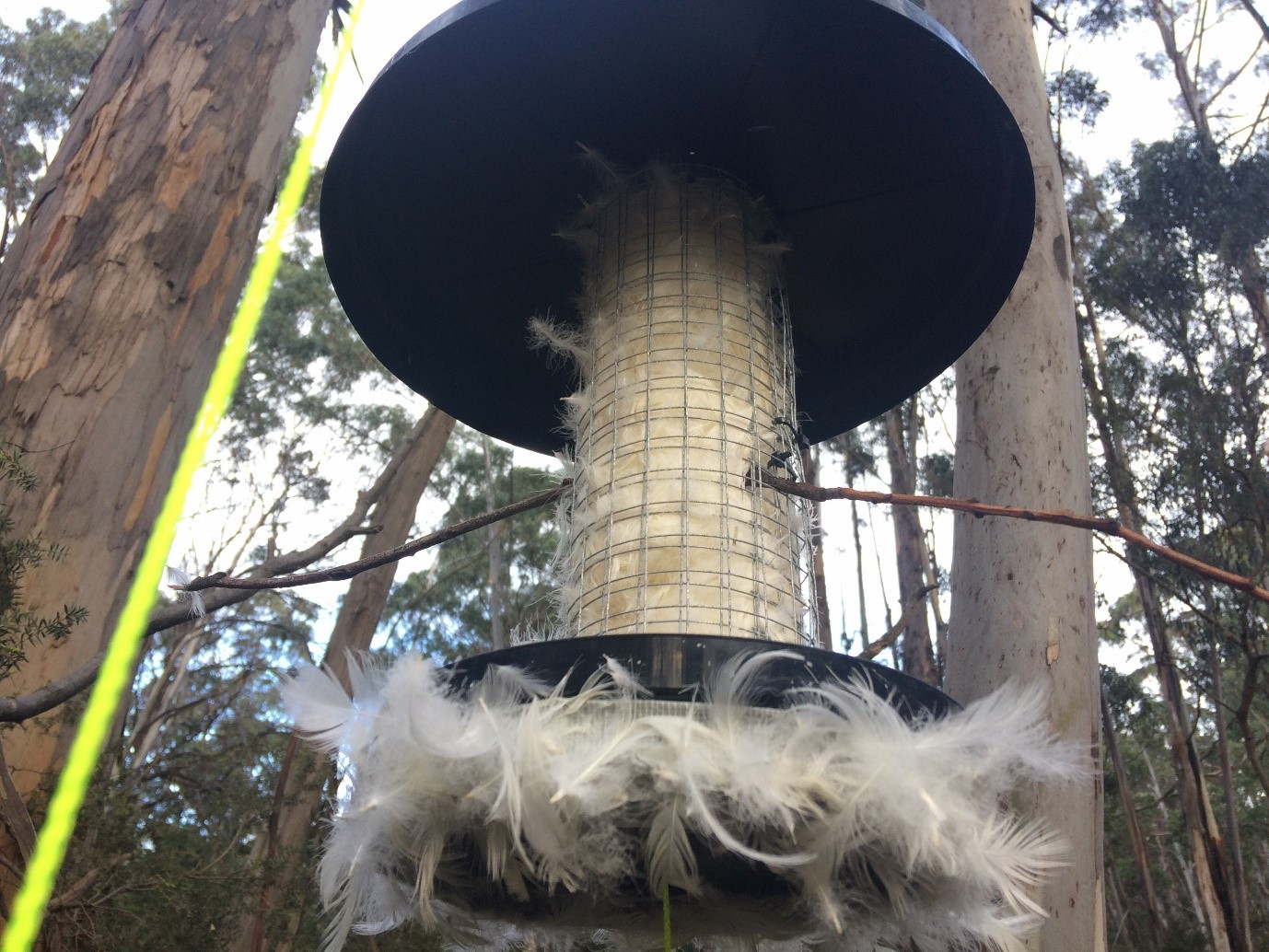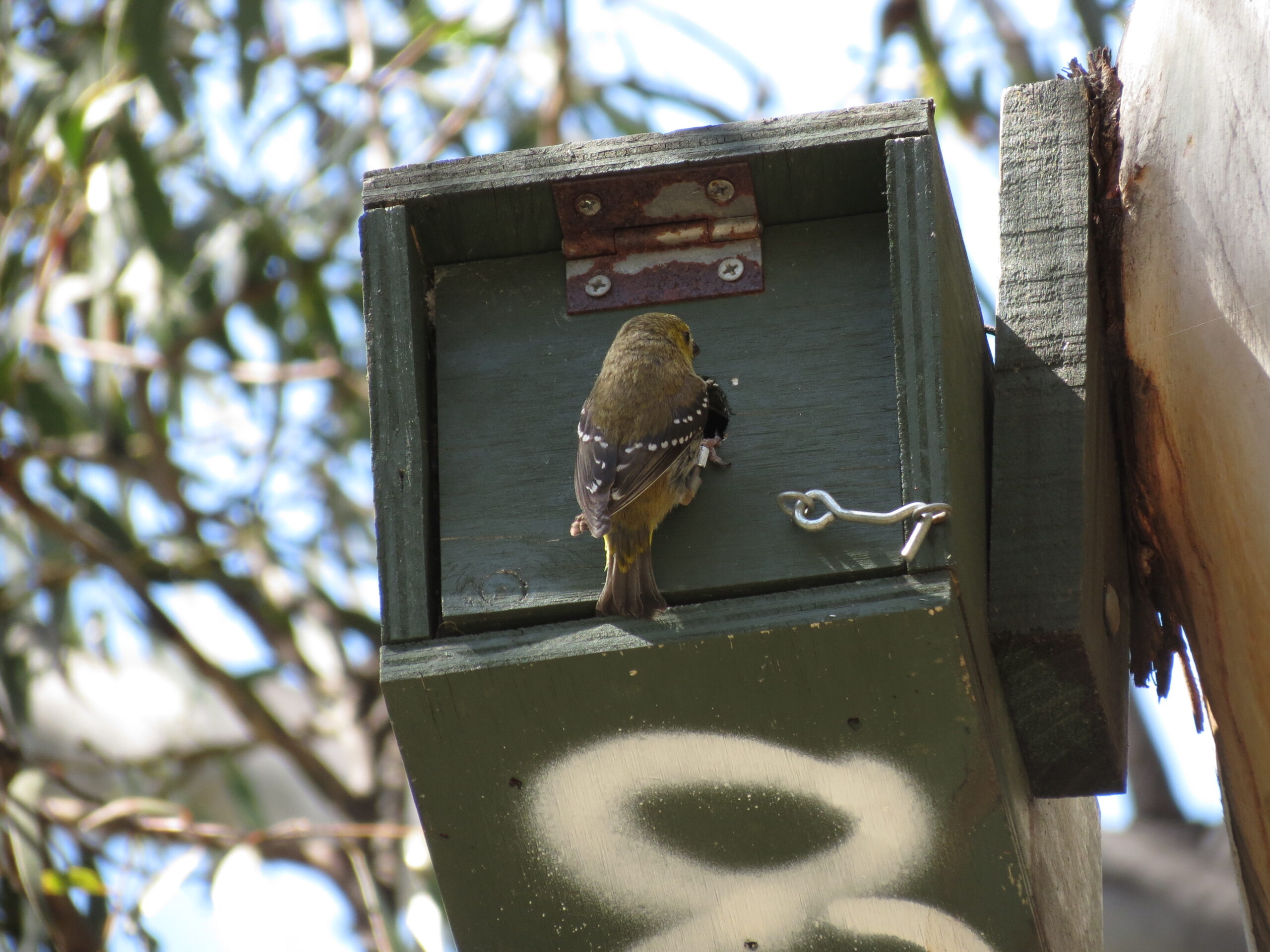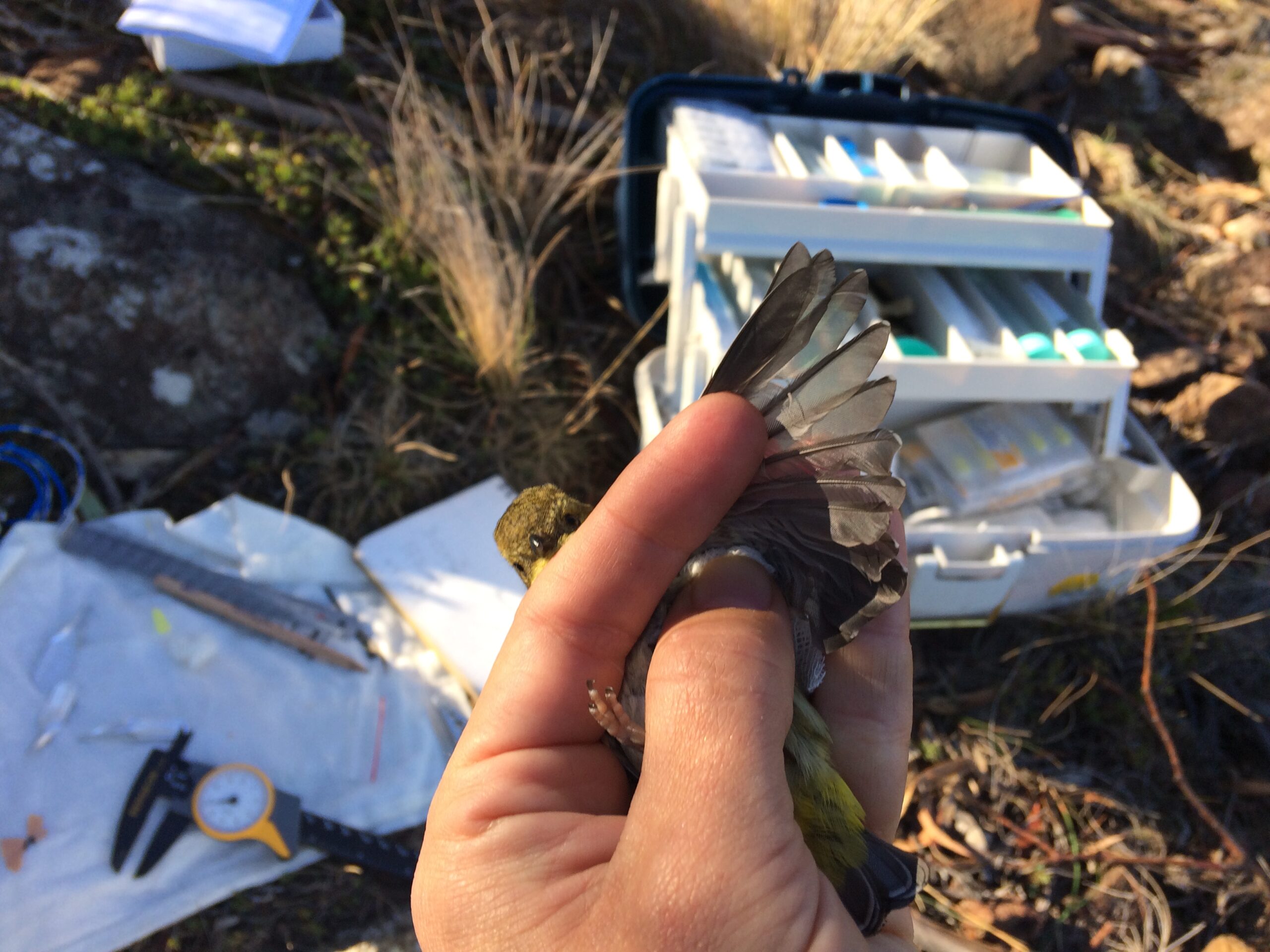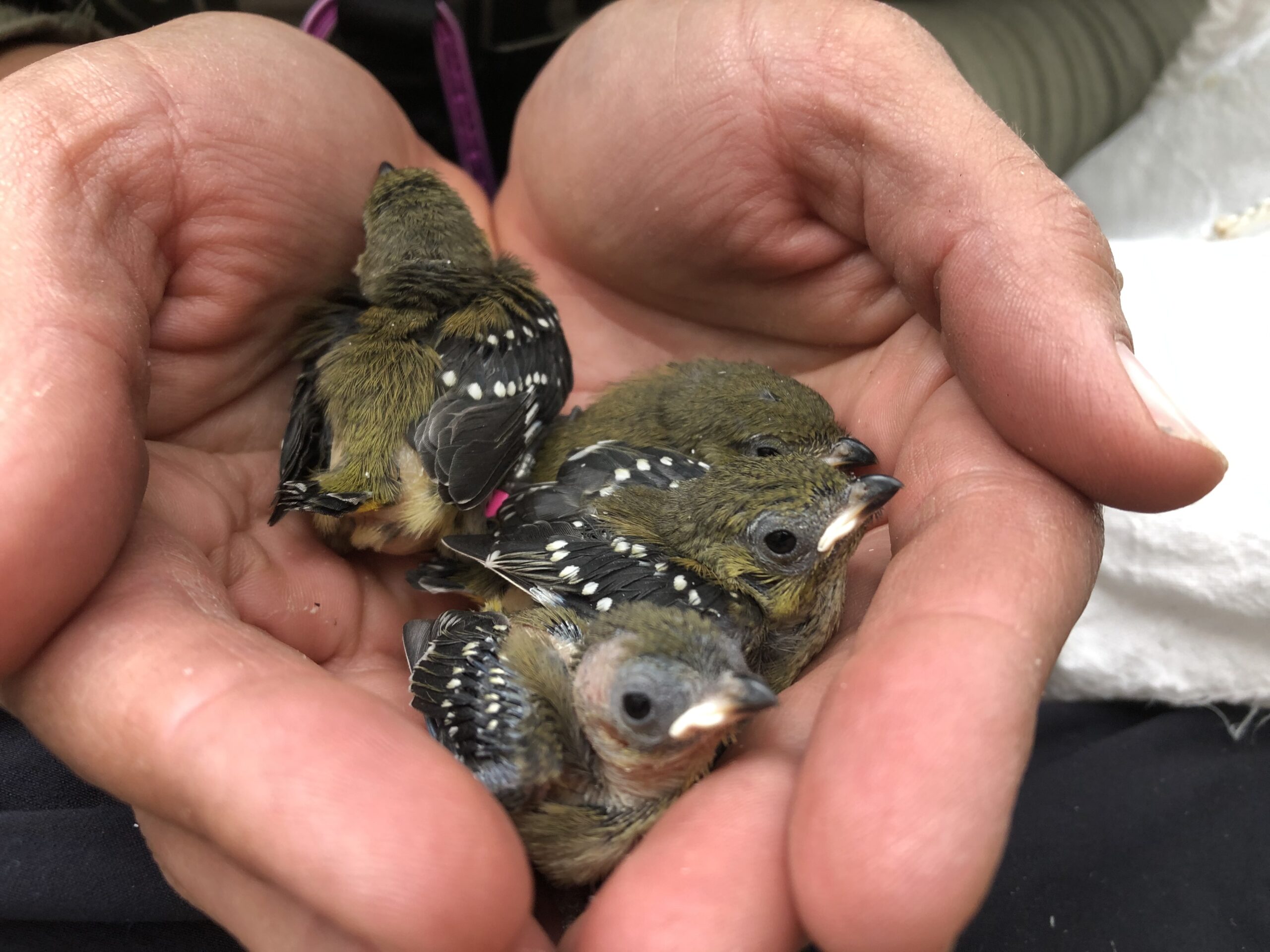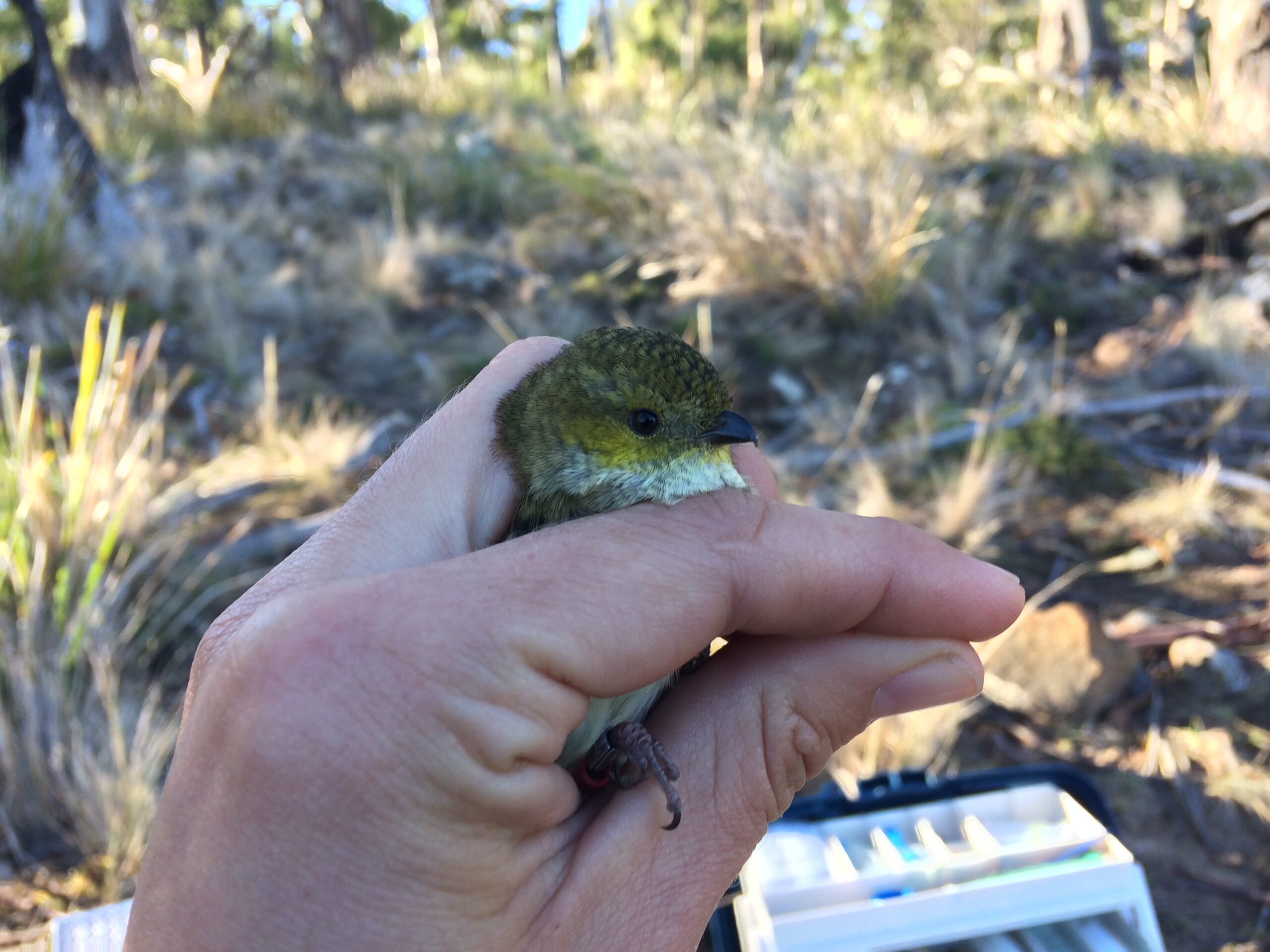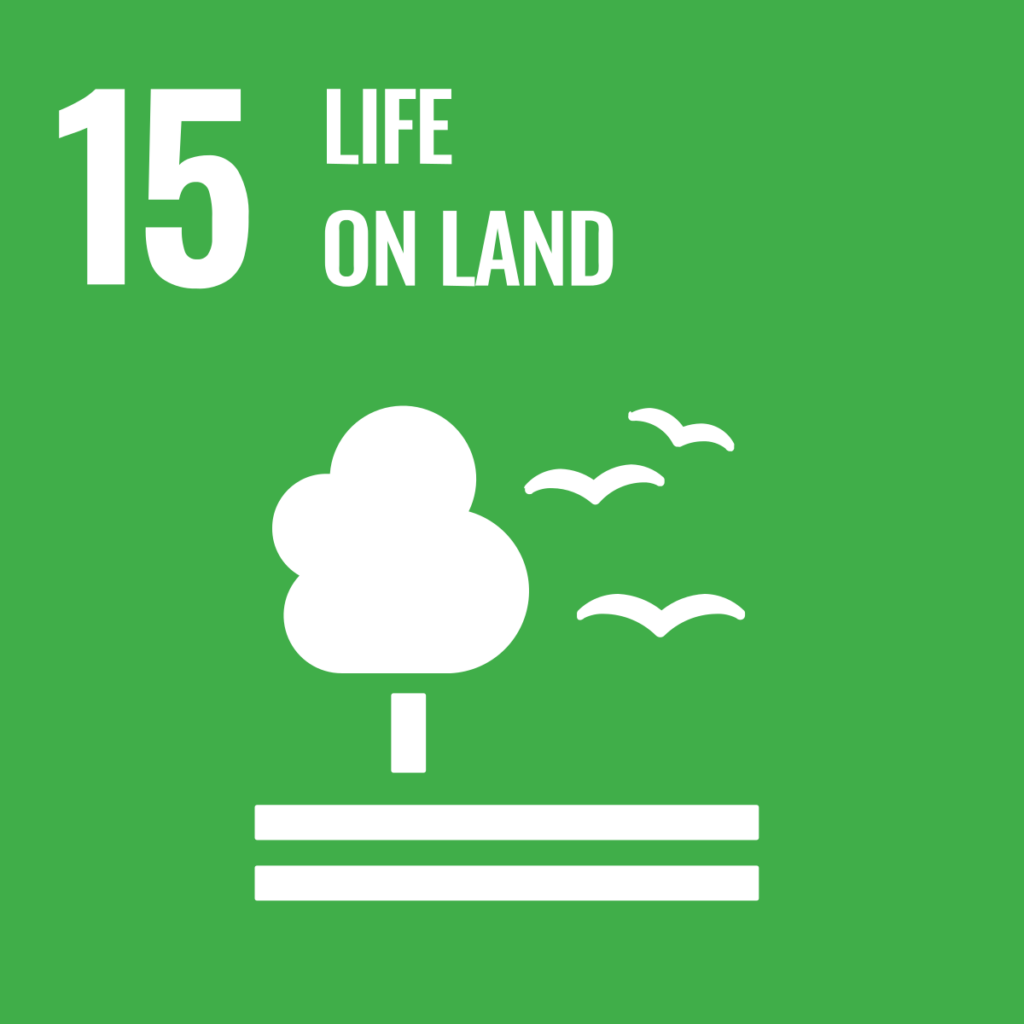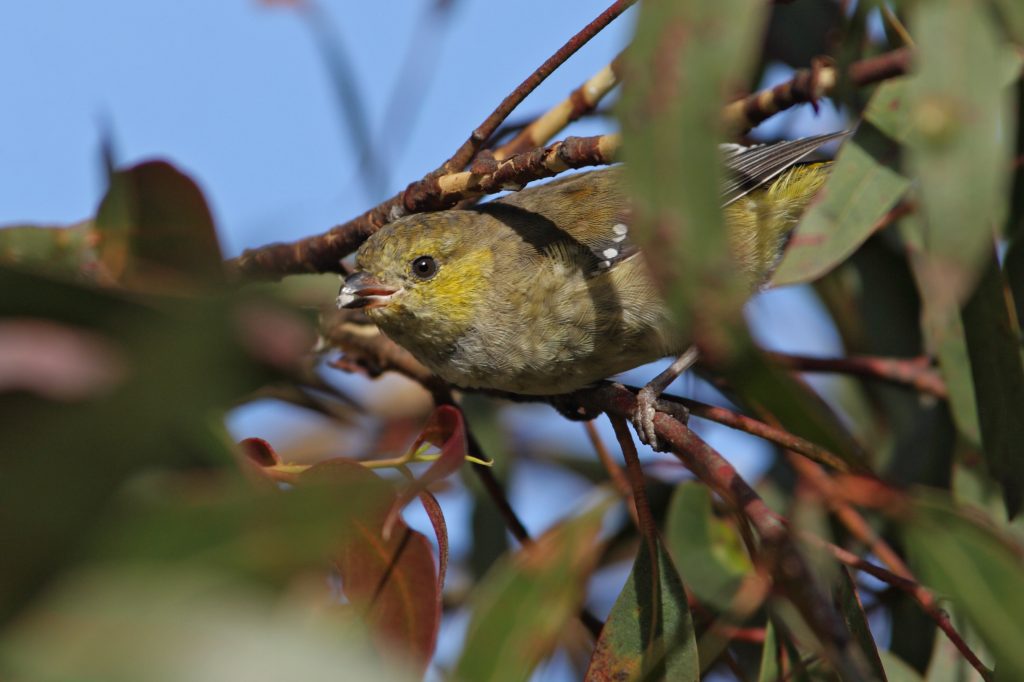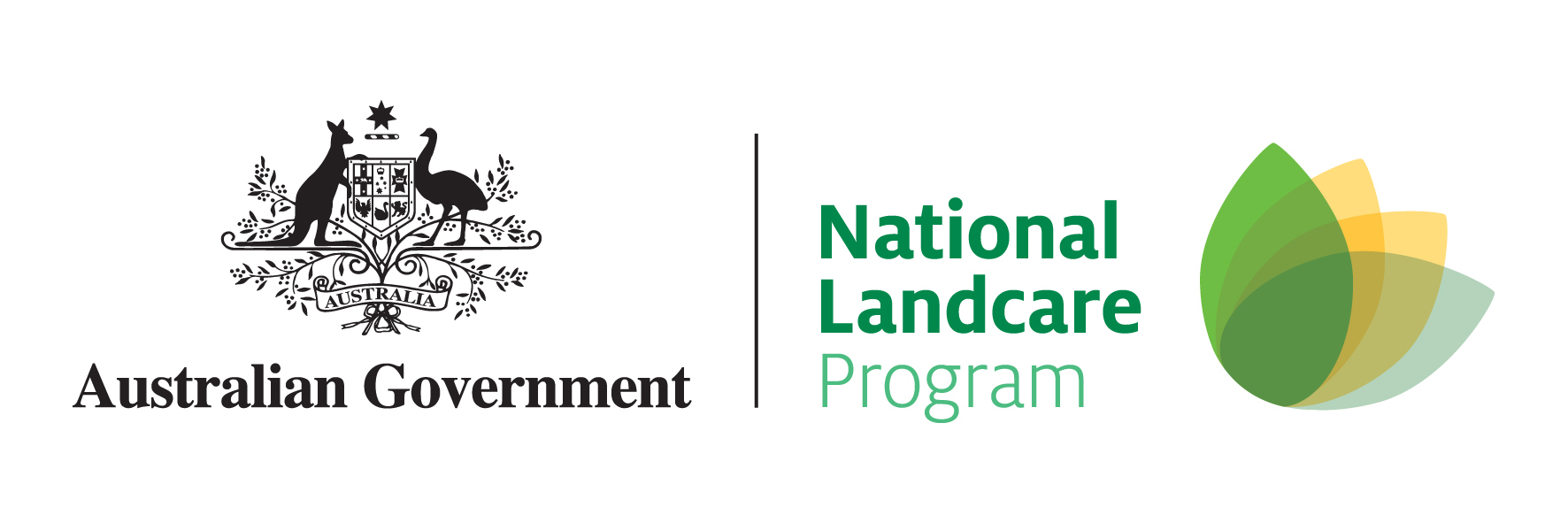Protecting the Forty-spotted Pardalote
Endemic to eastern Tasmania, the endangered Forty-spotted Pardalote survives in small, isolated mainland populations in the south east, as well as on offshore islands including Flinders, Maria and Bruny. It is under threat from the loss of its habitat (principally white gum – a critical feeding resource), its small population size, and the death of nestlings due to the larvae of an endemic parasitic fly that can kill up to 81% of chicks in infested areas.
This project focused on improving knowledge of Forty-spotted Pardalote’s life history, population size and conservation needs.
Our Approach
This project supported Forty-spotted Pardalote populations through;
- Research into whether dispensers containing insecticide-treated feathers can help combat the fly larvae in their nests on north Bruny Island;
- Examining the environmental characteristics of artificial nest boxes that makes them more likely to be used by Forty-spotted Pardalotes;
- Using the results of this research to determine interventions that could increase Forty-spotted Pardalote populations across their range;
- Examining the genetics of the population and assessing the potential effectiveness of various management interventions.
PROJECT PILLARS 40-SPOT
Background
The Forty-spotted pardalote (Pardalotus quadragintus) is a rare Tasmanian bird that is now largely confined to Bruny Island, Maria Island and two small patches of forest on coastal mainland Tasmania.
They rely on forests where their preferred food tree, white gums (Eucalyptus viminalis), are present. As their former range has contracted, remaining populations now face several threatening processes, including low nesting site availability, competitors, ongoing habitat degradation, and parasitism by the larvae of an ectoparasitic fly that causes severe nestling mortality.
This project, working in partnership with researchers from The Australian National University, looked into a number of factors that may help improve survival and also provide the necessary information to develop more effective management strategies.

Feather Dispenser Research
Early research by the Australian National University (ANU) demonstrated that dispensers containing bird-safe insecticide-treated feathers helps combat fly larvae in Forty-spotted Pardalote nests and dramatically improves the survival rate of nestlings.
Encouraged by this success, NRM South supported the ANU to expand on this research.
The aim of this new study was to see if feather dispensers used at a landscape scale could help boost reproductive success. As a final part of these project activities, NRM South and ANU are working to develop an online public guide on how to build a feather dispenser.
Nest Box Research
Genetic Analysis
Given the current threats, understanding more about the remaining population is crucial for the future management of Forty-spotted Pardalotes.
NRM South supported researchers from the Australian National University’s Difficult Birds Research Group to undertake the first comprehensive genetic assessment of the species.
Results from this research will be used to inform future management decisions.
Project Achievements
- Trials of feather dispensers completed during the 2022-23 year.
- Feather dispensers guidelines were developed to guide landowners how to build and maintain a feather dispenser to control the parasitic fly larvae that can impact nesting forty-spotted pardalotes. The guideline will be publicly released later in 2023.
- Genetics data has been collected and processed and a paper was published on findings.
- The report on nest box use by Forty-spotted Pardalotes was completed. It found that nest boxes were an important part of habitat restoration for the species, but the design of the box was important to prevent competition from Striated Pardalotes. It also found Forty-spotted Pardalotes are likely to be extinct on Flinders Island, as they have not been recorded there since 2012.
- The report on the population viability analysis of Forty-spotted Pardalotes was completed
Project Achievements
Feather dispenser trials completed
Feather dispenser guidelines developed
Genetic data collected and analysed
Nest box use research completed
Population viability analysis completed
What's Next
This project was completed in June 2023. We hope to continue working with stakeholders to improve biodiversity outcomes for species such as Forty-spotted Pardalotes on Bruny Island.

